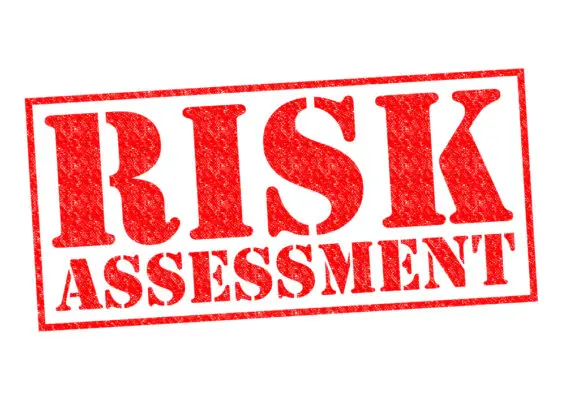This article aims to provide an overview of the AML (Anti-Money Laundering) risk assessment questionnaire, a tool used in the financial industry to assess and mitigate risks associated with money laundering activities.
Money laundering poses significant threats to the integrity and stability of financial systems worldwide, making it crucial for institutions to adopt effective risk assessment measures.
The AML risk assessment questionnaire is a structured framework to evaluate various factors contributing to money laundering risks. It encompasses a range of elements such as customer profiles, transaction patterns, geographic considerations, and product/service characteristics.
Institutions can identify potential vulnerabilities and determine appropriate control measures by systematically analyzing these factors.
Moreover, this article discusses the BSA/AML (Bank Secrecy Act/Anti-Money Laundering) risk assessment process and highlights its significance in developing a robust compliance program. Implementing an effective compliance program based on the risk assessment findings is imperative for institutions to meet regulatory requirements and safeguard against illicit financial activities.
Overall, understanding the features and processes involved in AML risk assessment questionnaires is vital for financial institutions aiming to uphold their commitment to combating money laundering effectively.

Features for AML Risk Assessment Questionnaire Template
The AML Risk Assessment Questionnaire Template has three key features: Ticket Management, Executive Dashboard, and Secure Surveys.
The Ticket Management feature allows for efficient tracking and resolution of issues related to AML risk assessments.
The Executive Dashboard comprehensively overviews the organization’s AML risk assessment status and performance indicators.
Lastly, the Secure Surveys feature ensures that sensitive information collected during the risk assessment is protected from unauthorized access or disclosure.
Ticket Management
Ticket management plays a crucial role in the overall risk assessment process, as it facilitates effective tracking and resolution of issues, thereby improving operational efficiency and minimizing potential financial losses.
To ensure a well-developed AML risk assessment questionnaire and to comply with regulatory requirements, financial institutions should incorporate ticket management into their risk management program.
Here are four ways ticket management enhances the risk assessment process:
- Streamlined Communication: Ticketing systems enable seamless communication among stakeholders involved in the risk assessment process, ensuring everyone is on the same page.
- Issue Tracking: Financial institutions can better track and monitor these issues throughout their lifecycle by creating tickets for identified risks or concerns.
- Escalation Process: Ticket management provides a structured escalation process for high-priority or complex risks, ensuring timely resolution and mitigation efforts.
- Reporting Capabilities: Ticketing systems generate comprehensive reports on risk profiles and trends derived from ticket data analysis, aiding in decision-making processes related to risk management principles.
Leveraging ticket management within their AML risk assessment questionnaire template, financial institutions can effectively enhance their ability to identify, assess, and mitigate various financial activity risks.
Executive Dashboard
The executive dashboard is a comprehensive and visually appealing tool for financial institutions to gain real-time insights into their overall risk management performance, allowing them to make informed decisions based on key metrics and trends.
This powerful tool provides a centralized view of critical information related to the institution’s AML risk assessment questionnaire, enabling executives to assess and monitor the effectiveness of their anti-money laundering efforts. The executive dashboard presents data in an easily digestible format, highlighting areas requiring attention or improvement.
Utilizing this tool, organizations can proactively identify potential risks and take appropriate actions to mitigate them. Incorporating a 3-column and 5-row table visually represents key metrics such as risk score, number of high-risk customers identified, suspicious activity reports filed, compliance status, and trend analysis over time.
This enables executives to assess the institution’s AML risk profile quickly and make strategic decisions accordingly.
| Metric | Risk Score | High-Risk Customers | Suspicious Activity Reports | Compliance Status | Trend Analysis |
|---|---|---|---|---|---|
| Current Period | X | Y | Z | W | T |
| Previous Period | A | B | C | D | E |
| Year-to-Date | M | N | O | P | Q |
Note: The table is for illustrative purposes only; values are placeholders.
Secure Surveys
Secure surveys provide a reliable method for financial institutions to gather essential information from their clients while ensuring the confidentiality and integrity of the data collected. These surveys play a crucial role in conducting AML/CFT risk assessment questionnaires, allowing banks to assess the risk posture within their business lines.
Adopting a risk-based or risk-focused approach, financial institutions can identify and prioritize areas of higher risk, enabling them to allocate resources effectively.
Secure surveys also aid in streamlining examination procedures by providing standardized templates for assessing risks. The use of secure surveys helps create an efficient and consistent process for evaluating risks within the banking sector. Overall, these surveys contribute to a comprehensive understanding of potential risks and assist in implementing appropriate risk-based procedures within financial institutions.
- Enhances client trust by safeguarding sensitive information.
- Facilitates accurate data collection through structured questionnaires.
- Reduces manual errors and improves efficiency in analyzing responses.
- Enables comparability across different business lines and institutions.
- Promotes regulatory compliance by providing documented evidence of risk assessment efforts.
BSA/AML Risk Assessment Process
The BSA/AML risk assessment process, involves identifying and analysing specific risk categories.
This step aims to categorize potential risks based on their likelihood and impact on the organization’s anti-money laundering efforts.
Organizations can better understand their exposure to money laundering activities by identifying specific risk categories and developing appropriate controls and mitigation strategies.
Analysis of these risk categories helps assess the severity of each identified risk, enabling organizations to prioritize resources and implement effective measures to mitigate potential threats.
Identification of Specific Risk Categories
Identifying specific risk categories involves a comprehensive examination of potential threats and vulnerabilities, culminating in a visual representation that maps out the intricate web of interconnected risks.
This process is crucial for an effective anti-money laundering (AML) risk assessment questionnaire as it helps identify and prioritize the quantity of risk associated with various factors.
The assessment of risks includes evaluating terrorist financing and proliferation financing risks, along with other potential risks such as high-risk customers or jurisdictions. To enhance the depth and complexity of the analysis, two sub-lists can be added:
- Assessment of Risk Factors:
- Customer due diligence.
- Transaction monitoring.
- Enhanced due diligence procedures.
- 2. National Risk Assessments:
- Evaluating country-specific AML regulations.
- Analyzing financial sector vulnerabilities.
Systematically identifying risk categories, organizations can better understand their exposure to AML risks and develop appropriate measures to mitigate them effectively.
Analysis of Specific Risk Categories
An in-depth analysis of specific risk categories allows organizations to understand the intricate web of interconnected risks, enabling them to develop effective measures for mitigating these risks. Risk assessment can help identify the degrees of risk associated with different activities and enable organizations to prioritize their efforts accordingly.
For banking organizations, assessing individual risks such as financial activity risk exposures and correspondent banking activities is crucial for maintaining stability in the financial system. National strategies and risk assessments can provide a framework for identifying and addressing these risks.
One tool that aids in this process is the correspondent banking questionnaire, which helps assess the level of risk associated with correspondent banking activities. Thoroughly analysing specific risk categories, organizations can better manage their overall risk exposure and enhance their resilience against potential threats.
| Risk Category | Description | Mitigation Measures |
|---|---|---|
| Financial Activity Risk Exposures | Assessing risks associated with various financial activities such as lending, investment, and trading. | Implement robust internal controls, conduct regular audits, and establish contingency plans. |
| Correspondent Banking Activities | Evaluating the inherent risks involved in correspondent banking relationships. | Establish due diligence procedures, monitor ongoing relationships, and implement transaction monitoring systems. |
Developing a BSA/AML Compliance Program Based on the BSA/AML Risk Assessment
This includes updating the BSA/AML risk assessment and the bank’s risk assessment.
Updating the risk assessment is crucial because it allows the bank to identify any changes in its risk profile and adjust its compliance program accordingly.
Regularly assessing the bank’s BSA/AML risk assessment, the institution can ensure that it accurately reflects its current risks and controls, enabling effective identification and mitigation of money laundering and terrorist financing risks.
Updating the Risk Assessment
To ensure the accuracy and relevance of the risk assessment, it is imperative to update the information and analysis regularly. This is because the risk landscape in the banking industry is constantly evolving, with new threats and vulnerabilities emerging over time.
Updating the risk assessment regularly, bank management can identify any changes in risks and take appropriate measures to mitigate them.
One effective way to update the risk assessment is using a two-step process. The first step involves gathering relevant information from various sources such as banking operations, personnel, foreign banks, and regulatory bodies. This information should include any changes in relevant requirements for banks or FDIC-supervised institutions.
The second step involves analyzing this information to determine its impact on the overall risk profile of the financial institution. This analysis should be conducted using risk-based procedures considering likelihood and potential impact factors.
Regularly updating the risk assessment, financial institutions can ensure that their compliance program remains effective in identifying and mitigating money laundering and terrorist financing risks.

Assessing the Bank’s BSA/AML Risk Assessment
Conducting an in-depth evaluation of the bank’s BSA/AML risk assessment involves a comprehensive analysis of various factors to determine the overall effectiveness and accuracy of the institution’s risk management framework.
The examiner-developed BSA/AML risk assessment serves as a benchmark for evaluating the adequacy of controls implemented by the bank. LFIs on risk-related issues, such as anti-money laundering and countering financing terrorism (AML/CFT), are crucial in assessing compliance with relevant requirements for banks.
The Basel Committee on Banking Supervision guides financial institutions in developing robust risk assessments that address potential risks associated with complex banking organizations and private banking customers.
Evaluating whether the bank has considered all relevant requirements, including customer due diligence and ongoing monitoring processes, is essential. Additionally, examining whether sufficient documentation supports decisions made by the beneficiary bank further enhances the assessment process.
Frequently Asked Questions
What are the key features when selecting an AML risk assessment questionnaire template?
When selecting a risk assessment questionnaire template, key features include its comprehensiveness, alignment with regulatory requirements, suitability for the organization’s size and complexity, ease of use, ability to capture relevant information, and availability of customizable sections.
What are the steps involved in the BSA/AML risk assessment process?
The steps involved in the BSA/AML risk assessment process include defining the scope, gathering relevant data, evaluating inherent risks, determining the controls in place, calculating the overall risk rating, and documenting findings for regulatory compliance.
How can a company develop a BSA/AML compliance program based on the risk assessment results?
A company can develop a BSA/AML compliance program based on the risk assessment results by analyzing the identified risks, designing appropriate controls and procedures, implementing training programs, conducting periodic reviews, and ensuring effective communication within the organization.
What are some best practices for conducting an effective AML risk assessment?
Best practices for conducting an effective AML risk assessment include: adopting a risk-based approach, ensuring comprehensive data collection, involving key stakeholders, conducting periodic reviews, considering internal and external factors, and documenting the entire process.
Are there any regulatory requirements or guidelines companies should follow when using an AML risk assessment questionnaire?
Companies should adhere to regulatory requirements and guidelines when utilizing an AML risk assessment questionnaire. Compliance with these standards ensures the effectiveness and legality of the assessment process, promoting a robust anti-money laundering framework.

Conclusion
The AML risk assessment questionnaire template provides a comprehensive tool for assessing the risks associated with money laundering and terrorist financing.
It helps organizations identify potential vulnerabilities and implement appropriate controls to mitigate them.
Following the BSA/AML risk assessment process, organizations can develop a robust compliance program that aligns with industry best practices.
This ensures effective monitoring and reporting of suspicious activities, ultimately enhancing overall risk management efforts.
Implementing a strong BSA/AML compliance program based on the risk assessment is crucial for organizations to meet regulatory requirements and protect themselves from financial crimes.

Chris Ekai is a Risk Management expert with over 10 years of experience in the field. He has a Master’s(MSc) degree in Risk Management from University of Portsmouth and is a CPA and Finance professional. He currently works as a Content Manager at Risk Publishing, writing about Enterprise Risk Management, Business Continuity Management and Project Management.

